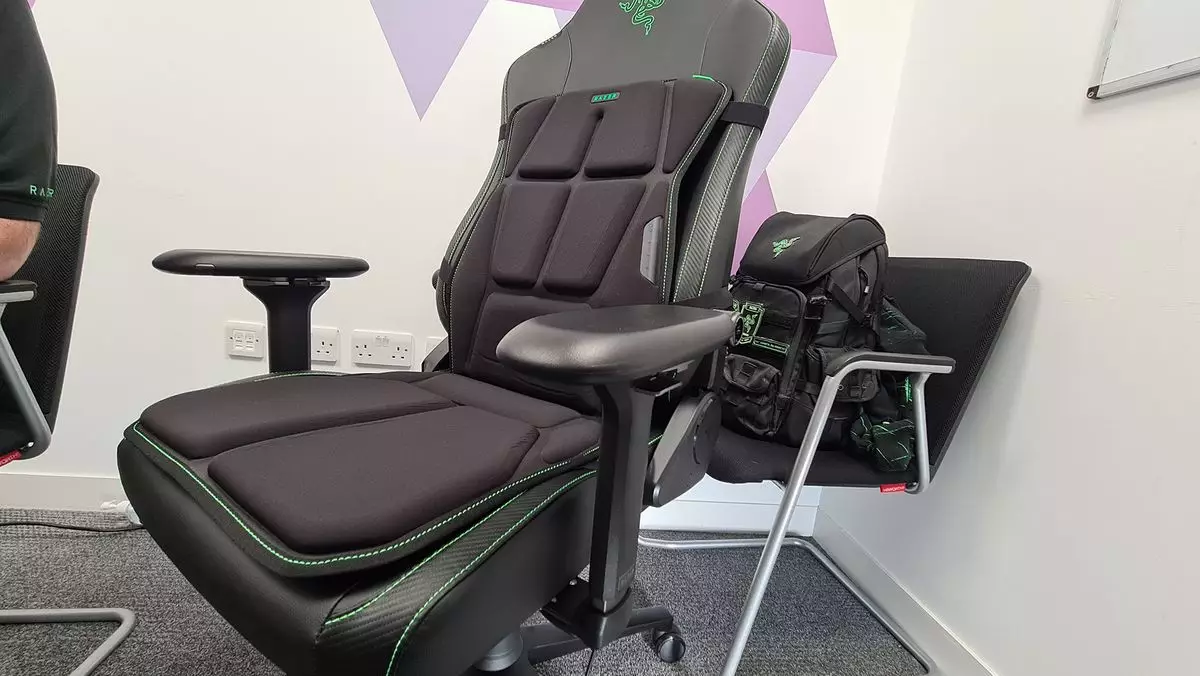The world of gaming has long been on a quest for immersive experiences, and technology continues to evolve to meet player demands. Razer, a prominent name in gaming hardware, has ventured into this arena with its latest offering, the Razer Freya. This haptic gaming cushion presents a new dimension to interactive gaming, aiming to fuse players with their virtual environment through tactile feedback. While the concept sounds intriguing, it raises questions about the practical benefits and overall impact on gaming experiences.
Overview of the Razer Freya: What Makes It Unique?
The Razer Freya is designed to be a versatile addition to any gaming setup. This cushion features six padded regions, each equipped with motors that vibrate in response to in-game actions. The premise is straightforward: augment your gaming with vibrations that simulate movements, sounds, and actions, creating a deeper bond with your gameplay. Players can utilize the Freya by placing it on their chairs and connecting it via the Razer Synapse 4 app, which allows customization of vibration intensity and responses.
One of the stand-out qualities of the Freya lies in its compatibility with various titles. Games such as Final Fantasy XVI have integrated native support, tailoring vibrational feedback to enhance specific actions. The potential for integration extends with the promise of a plugin for Unreal Engine 5, aimed at easing the development of compatible games. However, the reliance on developers to implement this functionality into their titles may represent a barrier for widespread adoption.
I had the opportunity to try out the Razer Freya during an early reveal event, where anticipation was high. Initially, the cushion felt surprising under me. The sensation of distinct vibrations triggered by in-game actions was novel; the motors hummed to life as I attacked enemies in Final Fantasy. The well-timed vibrations added a layer of interaction, making each combat action feel more substantial. Different pads reverberated based on the nuances of my in-game movements, contributing to a fuller experience.
However, this immersive feeling seemed fleeting. After a while, I found myself desensitized to the intricate haptic details, leading to a diminished impact over time. The unique novelty began to wear off, revealing a concern: does the haptic feedback truly enhance engagement, or is it merely a distraction? This is particularly crucial when considering whether to invest in such a device, especially for the price point set at $300.
As a fan of simulation racing, I pondered the potential applications of the Freya beyond traditional gaming. Could this cushion enhance experiences in sim racing setups? The answer seems to lean towards affirmative. Incorporating the Freya into a setup, such as a gaming chair coupled with a force feedback wheel, may amplify the immersive experience without requiring an extravagant full-motion rig. The cushion could serve as a cost-effective alternative for sim racing enthusiasts seeking varied sensations during gameplay.
However, it’s essential to ask: is the Freya a one-size-fits-all solution? The initial experience, while engaging in action-oriented games like Final Fantasy, left me questioning its functionality in different genres. Could the cushion elevate tension in horror games, or would it fit better in non-gaming applications, such as enhancing music experiences? It feels like a product still finding its footing.
Ultimately, while the Razer Freya presents an intriguing concept, its value may vary significantly among different gamers. For those deeply invested in simulation racing or those inherently curious about haptic technology, the cushion may present a worthwhile investment. However, my initial exploration left me unconvinced of its overall necessity, especially compared to the steep expenditure required.
As the gaming landscape continues to mature, products like the Freya show promise; they establish a foundation for more evolved experiences. Nevertheless, it appears that much depends on how developers embrace this technology when creating new titles. Until then, players must assess whether the haptic feedback warrants a place in their setup. With the Freya available for purchase from Razer, potential buyers should consider both the gaming experiences they wish to enhance and the value they attribute to tactile feedback before making a decision.

